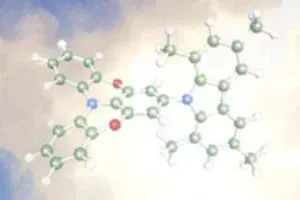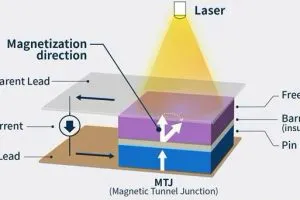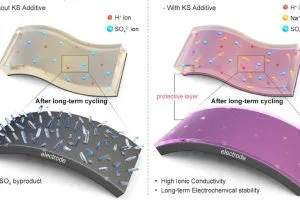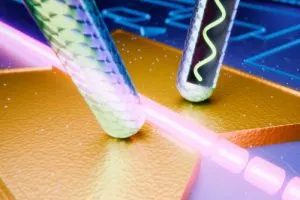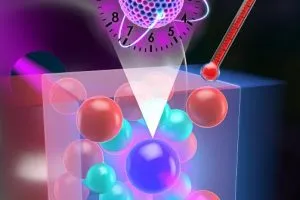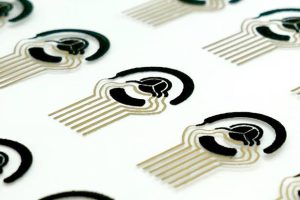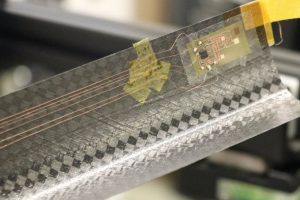Researchers at the University of Illinois Urbana-Champaign are investigating phase-change as a way to improve heat-sinking in space. Earth-bound heatsinks loose most of their heat by convection – a luxury not available to heatsinks on satellites which can only use radiation. And spacecraft heatsinks cannot be heavy. The research project is looking into situations were heat is not generated continuously, ...
Research
Research in electronics is critical to driving innovation in semiconductors, materials science, and energy systems. Breakthroughs in quantum computing, AI, and biotechnology are reshaping product development, from wearable devices to autonomous systems. Universities, research institutes, and industry leaders are collaborating on cutting-edge research, advancing nanotechnology, 5G systems, and edge computing. As global demand for high-performance electronics grows, ongoing research ensures the continued evolution of electronics design, providing the foundation for next-generation technologies that will impact industries worldwide.
Coherent microwave-optical photon converter for quantum networks
University of British Columbia researchers are aiming at long-distance entangled quantum networks with a coherent microwave-to-optical photon converter, that can theoretically be fabricated on a silicon wafer. Such a network would have fibre optic long-distance communication, possibly many km long, connecting microwave qubits. “The technology could serve as a translator for quantum computers, enabling them to talk to each other ...
Another step towards designer OLED materials
Researchers at Kyushu University have developed a more accurate model with which to design ‘thermally activated delayed fluorescence’ (TADF) OLED materials. Emission from OLEDs occurs when excited electrons drop to their regular energy state and emit energy in the form of fluorescence. Excitons to not have to go into the fluorescing singlet (S1) state, but can go into a triplet ...
20ps spin junction photo detector
TDK has demonstrated a fast optical sensor based on a magnetic tunnelling junction – a spin photo detector. The device is extremely fast in turning on – 20ps has been measured when hit by a femtosecond laser pulse. [Ed: an earlier version of this article incorrectly stated ’20ns’] It has a stack of two Co22Fe58B20 magnetic layers separated by a magnesium ...
Tree gum leads to longer lasting supercapacitors
The University of Glasgow has found a way to stabilise aqueous supercapacitors, using a gum taken from the bark of an Indian tree. It’s research team started with a simple supercapacitor made from carbon-based electrodes with a sulphuric acid electrolyte. While not a commercial formulation, it is “one kind of which is mostly researched in the conventional supercapacitor literature” Jun ...
Compostable pH sensor
The University of Glasgow has created a pH sensor for soil testing that can be composted at the end of its life. It is an impedance-based sensor, using screen-printed interdigitated carbon-based electrodes on a substrate made from the bio-degradeable polymer PHBV (poly(3-hydroxybutyrate-co-3-hydroxyvalerate)). Also deposited using screen-printing, the sensitive layer over the electrodes is molybdenum disulfide which, said the university, breaks down ...
1THz electro-optical modulator demonstrated
Researchers from ETH Zurich and its spin-out company Polaritron have created a moduator for infra-red that works up to 1.1THz. It is a modulator with two gold electrodes on a substrate facing each other across 10nm wide slot 10µm long (see artists impression). Inside the slot is a substance only described as a ‘non-linear organic electro-optic material’, and at opposite ...
Stepping beyond atomic clocks
En-route to nuclear clocks, researchers have found a resonant mode in thorium atom nuclei with a low temperature coefficient – nuclear oscillators are mooted initially as replacements for atomic oscillators in national-level frequency standards. The work has been done at JILA – a joint venture laboratory of NIST and the University of Colorado Boulder – and the Technical University of ...
Printable skin sensors select for many body chemicals
A team of Caltech engineers has developed an ink-jet-printable bio-sensor for skin using designer nano-particles. “Wearable biosensors that incorporate the nano-particles have been used to monitor metabolites in patients suffering from long covid, and the levels of chemotherapy drugs in cancer patients,” according to the university. “These sensors could be used to monitor a variety of biomarkers, such as vitamins, ...
Spring-out sensor boom is featherweight for cube sats
Aiming to add function to weight-constrained cube-sats, researchers at the University of Illinois Urbana-Champaign have integrated flexible electronics into a self-deploying boom, adding only 0.25g of mass. “It’s difficult to get commercial electronics integrated into these super thin structures,” said Illinois professor Xin Ning, who added that anything the team made had to be “able to withstand the harsh environment ...
 Electronics Weekly
Electronics Weekly


